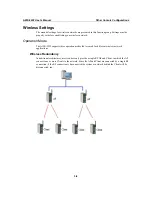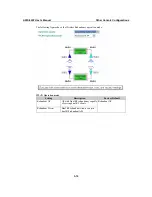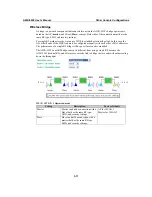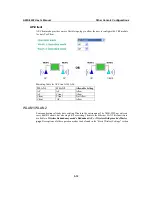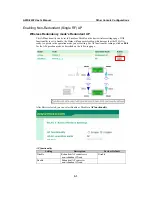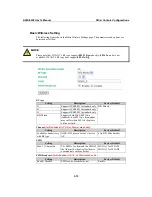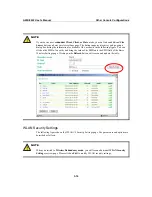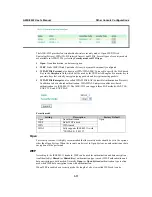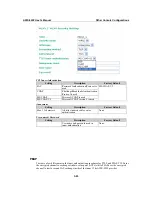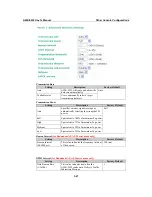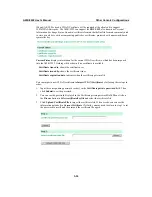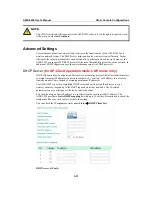
AWK-5222 User’s Manual
Other Console Configurations
3-17
The AWK-5222 provides four standardized wireless security modes: Open, WEP (Wired
Equivalent Privacy), WPA (Wi-Fi Protected Access) and WPA2. Several types of security models
are available in AWK-5222 by selecting
Security mode
and
WPA type
:
y
Open
: No authentication, no data encryption.
y
WEP
: Static WEP (Wired Equivalent Privacy) keys must be manually configured.
y
WPA/WPA2-Personal
: also known as WPA/WPA2-PSK. You need to specify the Pre-Shared
Key in the
Passphrase
field, which will be used by the TKIP or AES engine as a master key to
generate keys that actually encrypt outgoing packets and decrypt incoming packets.
y
WPA/WPA2-Enterprise
: also called WPA/WPA2-EAP (Extensible Authentication Protocol).
In addition to device-based authentication, WPA/WPA2-Enterprise enables user-based
authentication via IEEE802.1X. The AWK-5222 can support three EAP methods: EAP-TLS,
EAP-TTLS, and EAP-PEAP.
Security mode
Setting
Description
Factory Default
Open No
authentication
WEP Static
WEP
is
used
WPA
WPA is used
WPA2
Fully supports IEEE802.11i with
“TKIP/AES + 802.1X”
Open
Open
For security reasons, it is highly recommended that the security mode should be set to the options
other than Open System. When the security mode is set to Open System, no authentication or data
encryption will be performed.
WEP
According to the IEEE802.11 standard, WEP can be used for authentication and data encryption
(confidentiality).
Shared
(or
Shared Key
) authentication type is used if WEP authentication and
data encryption are both needed. Normally,
Open
(or
Open System
) authentication type is often
used when WEP data encryption is run with authentication.
When WEP is enabled as a security mode, the length of a key (so-called WEP seed) can be






